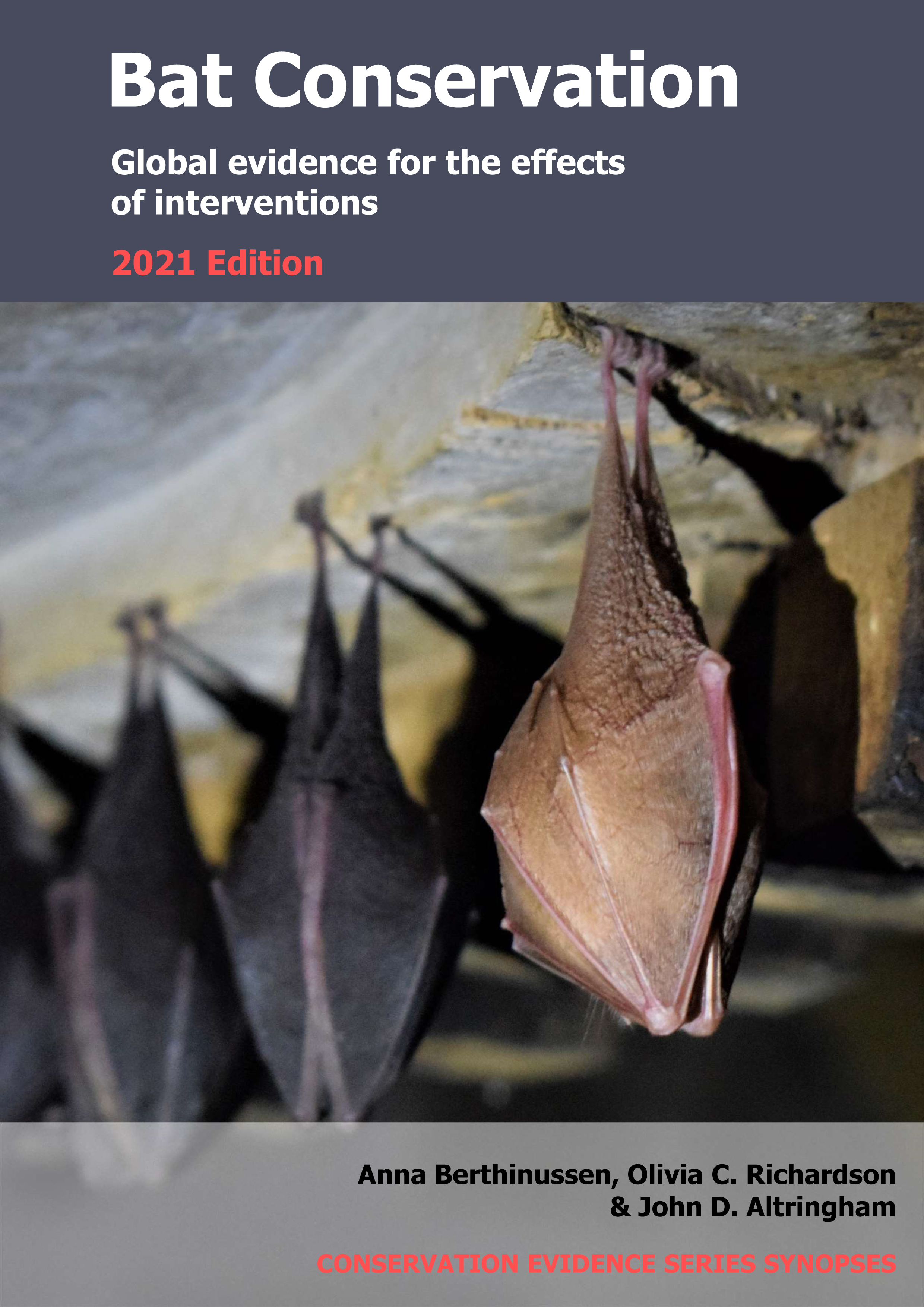Pay farmers to cover the costs of conservation measures (e.g. agri-environment schemes)
-
Overall effectiveness category Unlikely to be beneficial
-
Number of studies: 3
View assessment score
Hide assessment score
How is the evidence assessed?
-
Effectiveness
27% -
Certainty
42% -
Harms
0%
Study locations
Supporting evidence from individual studies
A replicated, paired sites study in 2008 on 18 pairs of farms in Scotland, UK (Fuentes-Montemayor et al 2011) found that agri-environment scheme farms had lower overall bat activity and foraging activity than non-participating conventional farms. Overall bat activity and foraging activity were lower on agri-environment scheme farms (total 790 bat passes, 37 feeding buzzes) than conventional farms (total 1,175 bat passes, 85 feeding buzzes). The same was true for activity of the two most frequently recorded bat species: common pipistrelle Pipistrellus pipistrellus (agri-environment scheme farms: 159 bat passes; conventional farms: 312 bat passes) and soprano pipistrelle Pipistrellus pygmaeus (agri-environment scheme farms: 537 bat passes; conventional farms: 734 bat passes). Eighteen farms participating in the Scottish Rural Stewardship Scheme since 2004 were paired with nearby conventionally managed farms of a similar size and with similar farming activities. Each of 18 pairs of farms was sampled once on the same night in June–September 2008. Bat activity was recorded along transects (2.5–3.7 km long) from 45 minutes after sunset using bat detectors.
Study and other actions testedA replicated, site comparison study in 2008 of 18 paired pasture fields in Devon, UK (MacDonald et al 2012) found that fields under agri-environment scheme management had similar bat activity as fields under conventional management. There was no significant difference in the overall number of bat passes recorded over agri-environment scheme fields (average 3 passes/night) and conventionally managed fields (1 pass/night). Seven bat species were recorded in total (see original paper for data for individual species). Paired agri-environment scheme fields and conventionally managed fields were matched where possible by topography, size and landscape context. Agri-environment scheme fields were managed with no pesticide or fertiliser inputs. Conventionally managed fields had no management restrictions. Bat activity was recorded using bat detectors at each pair of fields for 1–2 full nights in May, July, or August 2008.
Study and other actions testedA replicated, paired sites study in 2009–2011 of 40–60 pairs of commercial farms in south Wales, UK (Angell et al 2019) found that agri-environment scheme farms had a similar occurrence and similar or lower activity of six bat species compared to conventional farms. Overall occurrence (proportion of transect sections with species present) and echolocation activity (counts of bat passes) did not differ significantly between agri-environment scheme farms and conventional farms for five of six bat species: common pipistrelles Pipistrellus pipistrellus, soprano pipistrelles Pipistrellus pygmaeus, Daubenton’s bats Myotis daubentonii, greater horseshoe bats Rhinolophus ferrumequinum and lesser horseshoe bats Rhinolophus hipposideros (data reported as statistical model results). For common noctules Nyctalus noctula, occurrence was similar on agri-environment scheme and conventional farms, but echolocation activity was 33% lower on agri-environment scheme farms. Pairs of agri-environment scheme farms (under scheme management for 3–11 years) and conventional farms were 2–26 km apart and matched by area, altitude, farm type and proximity to towns. Field transects were carried out at 60 pairs of farms, waterway transects at 40 pairs of farms, and static hedgerow surveys at 45 pairs of farms. Surveys were carried out twice/year between June and September in 2009, 2010 and 2011.
Study and other actions tested
Where has this evidence come from?
List of journals searched by synopsis
All the journals searched for all synopses
This Action forms part of the Action Synopsis:
Bat Conservation
Bat Conservation - Published 2021
Update 2020





)_2023.JPG)














